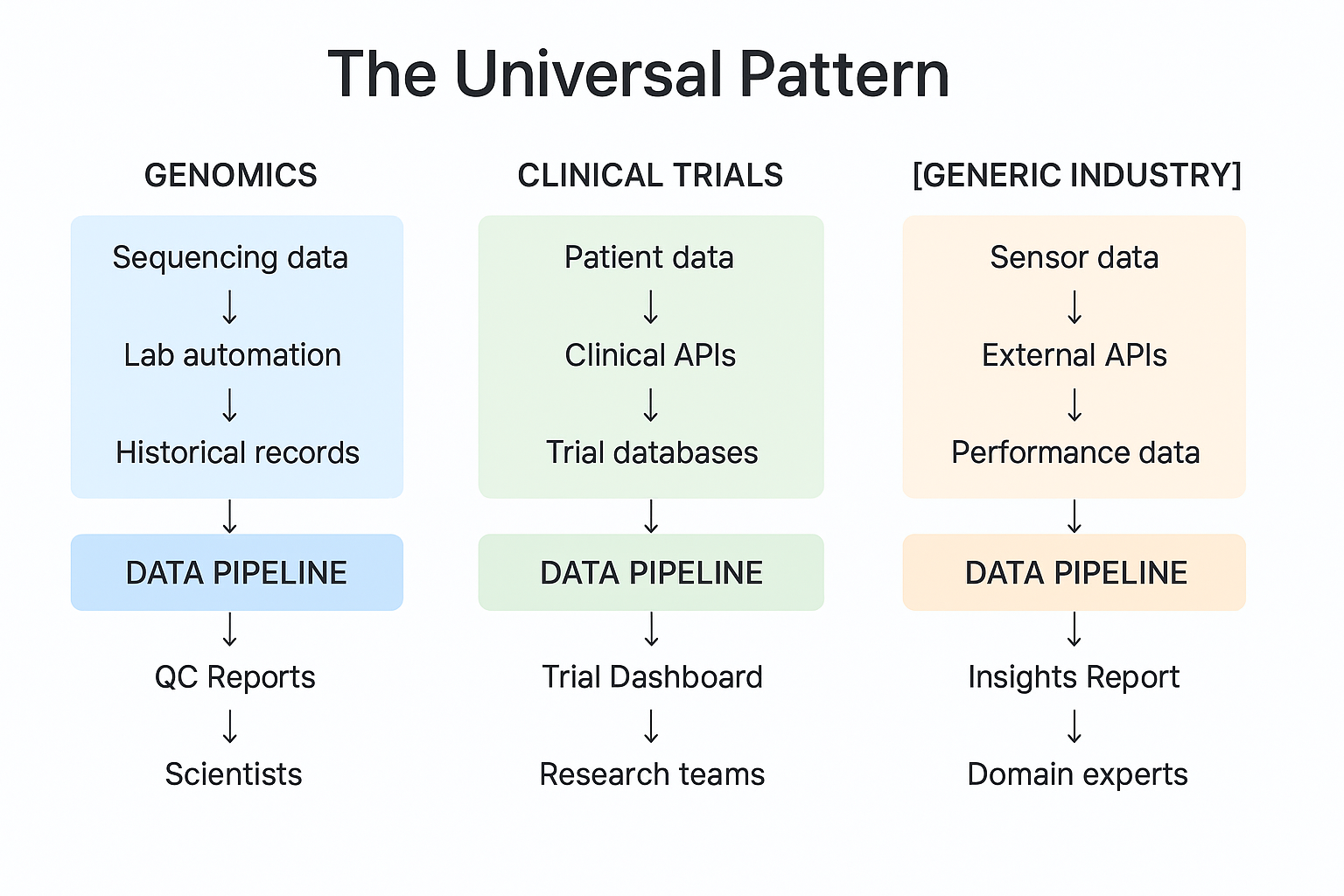October 16, 2025

After building data systems in genomics, clinical trials, and synthetic biology, I’ve noticed the same architecture pattern emerging again and again—even in completely different industries.
The pattern:
→ Multiple data sources (APIs, sensors, external databases)
→ Automated integration and analysis
→ User-facing reports that non-technical experts can act on immediately
𝗪𝗵𝘆 𝘁𝗵𝗶𝘀 𝗽𝗮𝘁𝘁𝗲𝗿𝗻 𝗺𝗮𝘁𝘁𝗲𝗿𝘀:
I once built a quality control pipeline that integrated sequencing data, lab automation outputs, and historical performance metrics. As a result, scientists could troubleshoot failed experiments in minutes instead of days, and they didn’t need to understand the underlying computational complexity.
I also once created a clinical trials dashboard that pulled from multiple APIs and transformed scattered data into visual insights. Research teams went from waiting days for analysis to exploring data independently in real-time.
Recently, I’ve been exploring opportunities outside biotech—and I keep seeing the exact same problem: domain experts drowning in data from multiple sources, needing insights fast, but lacking the computational tools to connect the dots.
𝗧𝗵𝗲 𝘁𝗿𝗮𝗻𝘀𝗳𝗲𝗿𝗮𝗯𝗹𝗲 𝘀𝗸𝗶𝗹𝗹𝘀:
The sensors change (sequencing instruments vs IoT devices vs API feeds), but the architecture stays the same:
→ Design data storage that scales from prototype to production
→ Build pipelines that handle messy real-world data gracefully
→ Create reports that build trust through clarity and consistency
→ Ship fast, iterate based on user feedback, then optimize
𝗪𝗵𝗮𝘁 𝗜’𝘃𝗲 𝗹𝗲𝗮𝗿𝗻𝗲𝗱:
Domain expertise takes years to build. But if you can bridge the gap between complex data and the people who need insights from it, you become valuable in any industry that’s drowning in data but starving for actionable information.
That’s every industry right now.
If you’re building data systems that integrate multiple sources and serve non-technical users, I’d love to hear what patterns you’re seeing. What stays the same across domains? What actually changes?



